Author: Will Lovell
Schwarzbier is a German lager that’s known for being quite dark while not possessing the pungent roast characteristics typical in styles like Porter and Stout. A common method brewers employ to achieve this involves the use of huskless roasted grains, as it’s widely accepted the burnt husk is what contributes the strongest roast flavors. In the case of barley malt, a dehusking process is required, though considering wheat malt is huskless, some brewers have been relying more on roasted versions of this notable cereal grain.
One such option produced by Briess Malting is Midnight Wheat, which is roasted to 407 °L and purportedly contributes notes of toasted bread, dark chocolate, and coffee to beer with a lower risk of astringency or acridity. A similar product is Chocolate Wheat Malt, made by Weyermann Specialty Malts , which is roasted to 340 to 450 °L and is said to impart essentially the same flavor and color characteristics as Midnight Wheat.
I’ve not used either of these products very much, but I like the idea of using a huskless roasted wheat grain in darker lagers, as they’re not expected to have the stronger roast flavors associated with grains like roasted barley and Black Patent. Given the general similarities between Midnight Wheat and Chocolate Wheat Malt, the biggest differences being the region where they’re grown and malted, I was curious if it was worth keeping both on hand or if they could be used interchangeably, so I designed an xBmt to test it out!
| PURPOSE |
To evaluate the differences between a Schwarzbier made with a portion of Midnight Wheat and one made using the same proportion of Chocolate Wheat Malt.
| METHODS |
For this xBmt, I went with a simple Schwarzbier recipe with the hope of accentuating any differences caused by the different roasted wheat malts.
Midnight Special
Recipe Details
| Batch Size | Boil Time | IBU | SRM | Est. OG | Est. FG | ABV |
|---|---|---|---|---|---|---|
| 5.5 gal | 60 min | 26 | 30.6 SRM | 1.051 | 1.013 | 4.99 % |
| Actuals | 1.051 | 1.013 | 4.99 % | |||
Fermentables
| Name | Amount | % |
|---|---|---|
| Llano Pilsner | 7.75 lbs | 65.26 |
| Munich Malt | 3 lbs | 25.26 |
| Midnight Wheat Malt OR Chocolate Wheat Malt | 12 oz | 6.32 |
| Crystal 60 | 6 oz | 3.16 |
Hops
| Name | Amount | Time | Use | Form | Alpha % |
|---|---|---|---|---|---|
| Northern Brewer | 15 g | 60 min | Boil | Pellet | 10.2 |
| Saaz | 30 g | 15 min | Boil | Pellet | 4.4 |
Yeast
| Name | Lab | Attenuation | Temperature |
|---|---|---|---|
| Harvest (L17) | Imperial Yeast | 74% | 50°F - 60.1°F |
Notes
| Water Profile: Ca 60 | Mg 0 | Na 0 | Cl 49 | SO4 76 |
Download
| Download this recipe's BeerXML file |
After adding identical volumes of RO water to separate Delta Brewing Systems AIO units, adjusting each to the same desired mineral profile, then setting the controllers to heat them up, I weighed out and milled the grains.
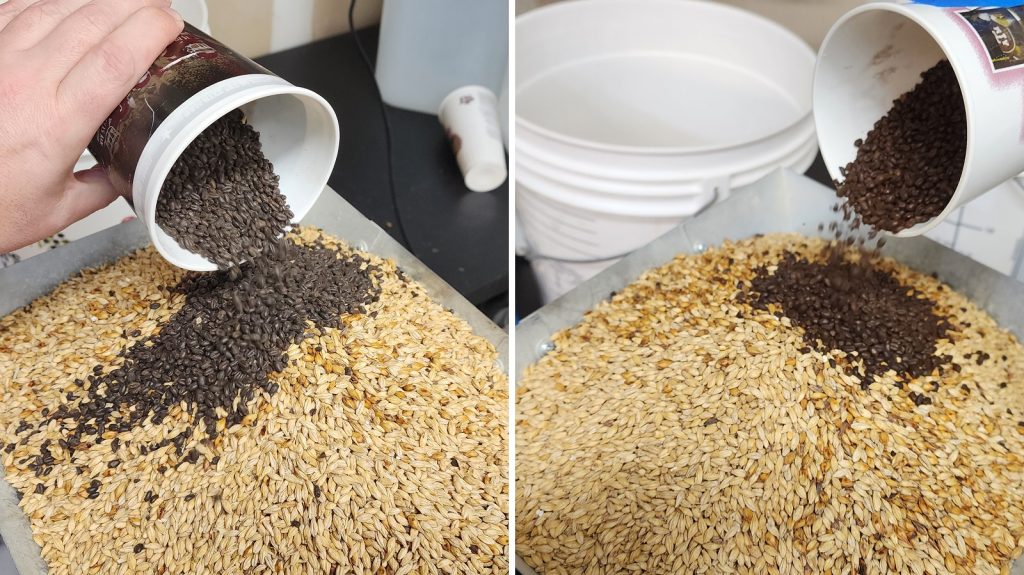
Once the water for each batch was adequately heated, I incorporated the grains then checked to make sure both were at the same target mash temperature.
While the mashes were resting, I prepared the kettle hop additions.
Once each 60 minute mash was complete, I removed the grains then proceeded to boil the worts for 60 minutes, adding hops as stated in the recipe.
Refractometer readings showed an arguably negligible difference in OG between the worts.
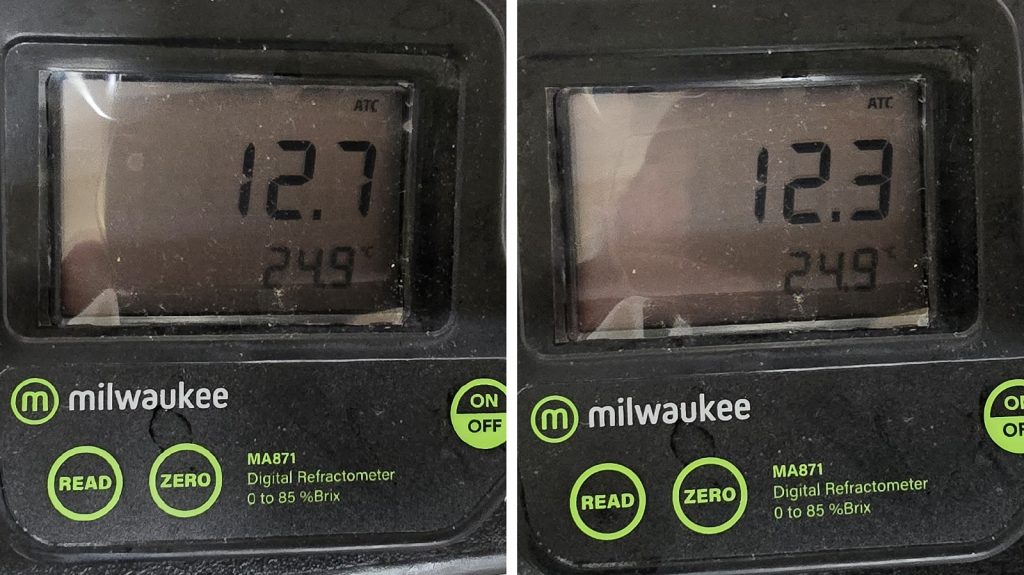
Identical volumes of wort were transferred to separate Kegmenters that were placed in my chamber and left to finish chilling to my desired fermentation temperature of 64°F/18°C for a few hours before I pitched a pouch of Imperial Yeast L17 Harvest into each.
Noticing an absence of fermentation activity after 9 days, I took hydrometer measurements showing the beers finished at the same FG.
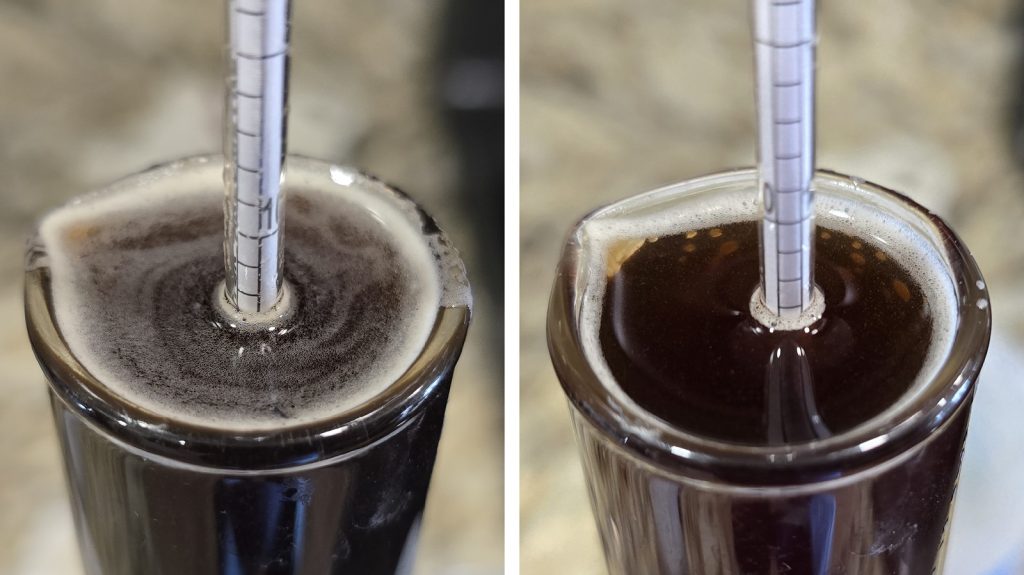
At this point, I transferred the beers to sanitized kegs that were placed in my keezer and left on gas for 5 weeks before they were ready for evaluation.
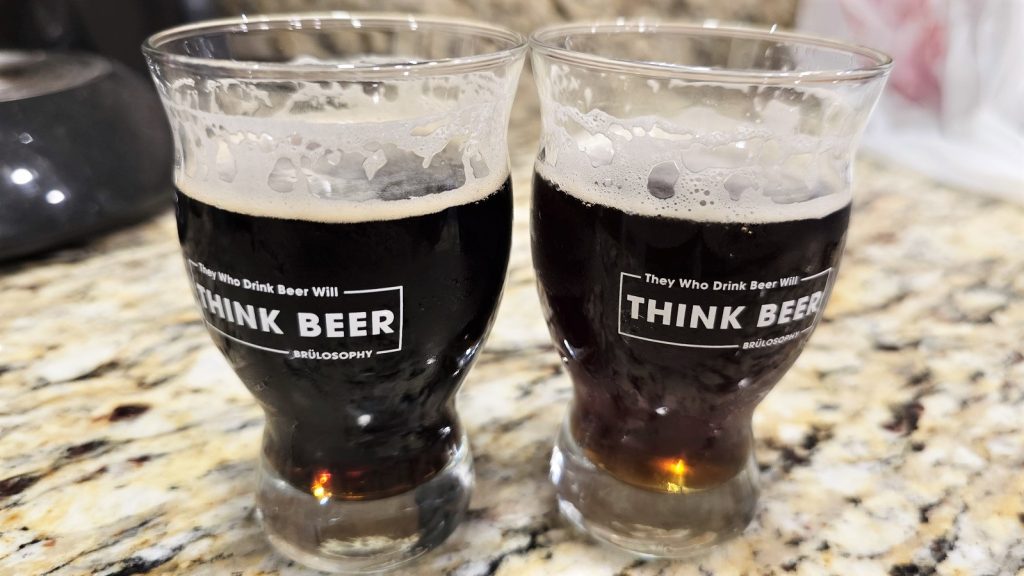
| RESULTS |
A total of 21 people of varying levels of experience participated in this xBmt. Each participant was served 1 sample of the beer made with Midnight Wheat and 2 samples of the beer made with Chocolate Wheat Malt in different colored opaque cups then asked to identify the unique sample. While 12 tasters (p<0.05) would have had to accurately identify the unique sample in order to reach statistical significance, just 8 did (p=0.40), indicating participants in this xBmt were unable to reliably distinguish a Schwarzbier dosed with Midnight Wheat from one made with Chocolate Wheat Malt.
My Impressions: Out of the 5 semi-blind triangle tests I attempted, I correctly identified the odd-beer-out just twice. These beers were identical in every way to me, tasty examples of Schwarzbier that possessed a light roast character with hints of dark chocolate and no astringency or acridity.
| DISCUSSION |
Wheat is an ingredient with a long history in brewing, and while it’s mostly associated with paler styles such Weissbier, maltsters have more recently begun producing roasted versions intended to contribute a less harshness to darker styles of beer owing to its huskless nature. Two popular options are Midnight Wheat, a domestic product, and Chocolate Wheat Malt, which is produced in Germany. Interestingly, tasters in this xBmt were unable to reliably distinguish a Schwarzbier made with Midnight Wheat from one where Chocolate Wheat Malt was used instead.
The most probable explanation for these results is that Midnight Wheat and Chocolate Wheat Malt, despite being produced by different maltsters in different regions of the world, are similar enough to effectively be used interchangeably. However, it could also be that the lack of a perceivable difference between these beers was a function of the proportion of roasted malt used, though 6% is pretty customary for a Schwarzbier.
Considering how much I enjoyed these beers, which tasted identical to me, my choice of which roasted wheat malt to use in the future will be based solely on availability and perhaps cost. When looking really closely at the beers side-by-side, the one made Midnight Wheat did appear to be a smidge darker than the Chocolate Wheat Malt version, but not by a wide margin at all.
If you have any thoughts about this xBmt, please do not hesitate to share in the comments section below!
Support Brülosophy In Style!
All designs are available in various colors and sizes on Amazon!
Follow Brülosophy on:
FACEBOOK | TWITTER | INSTAGRAM
If you enjoy this stuff and feel compelled to support Brulosophy.com, please check out the Support page for details on how you can very easily do so. Thanks!


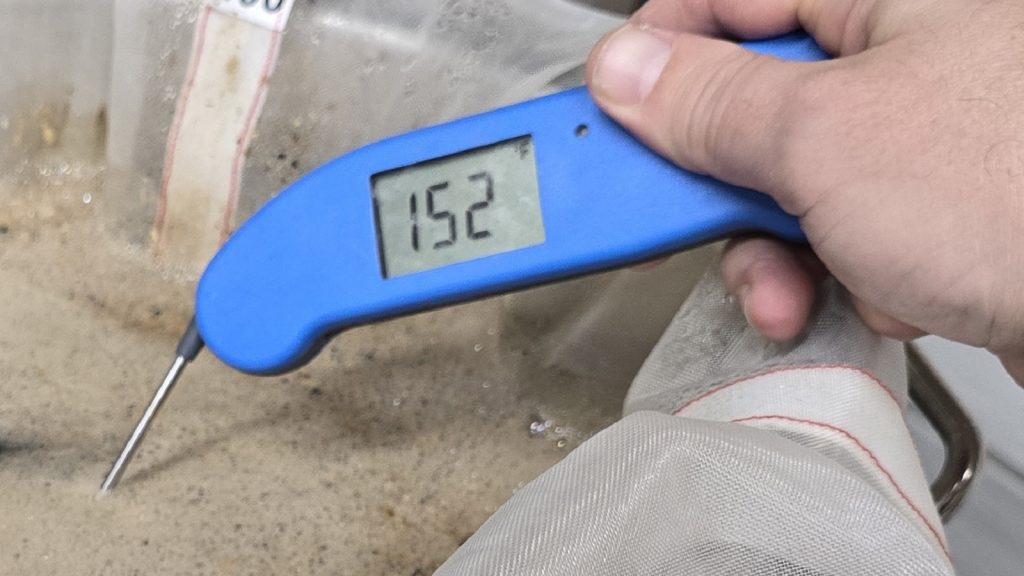
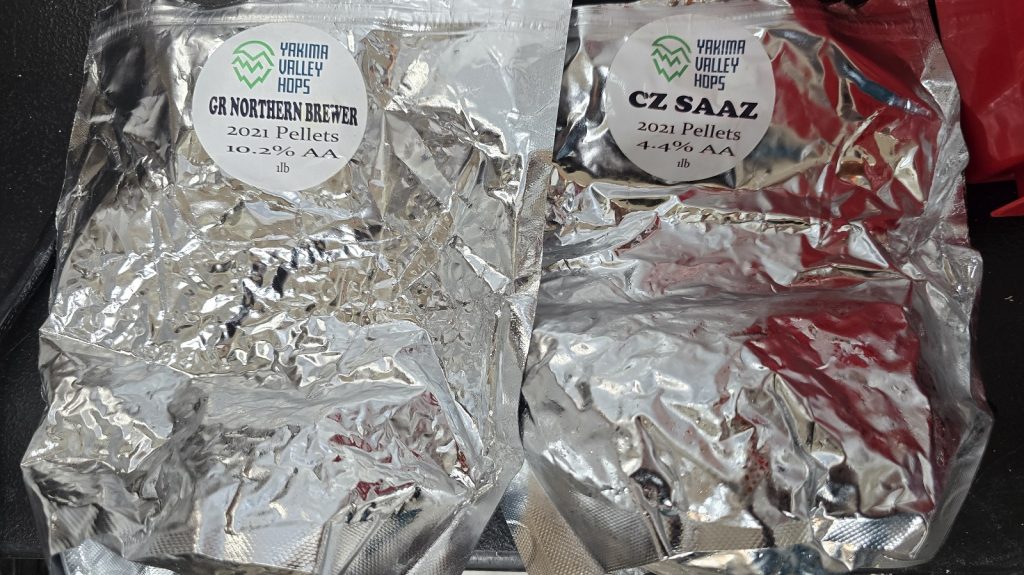
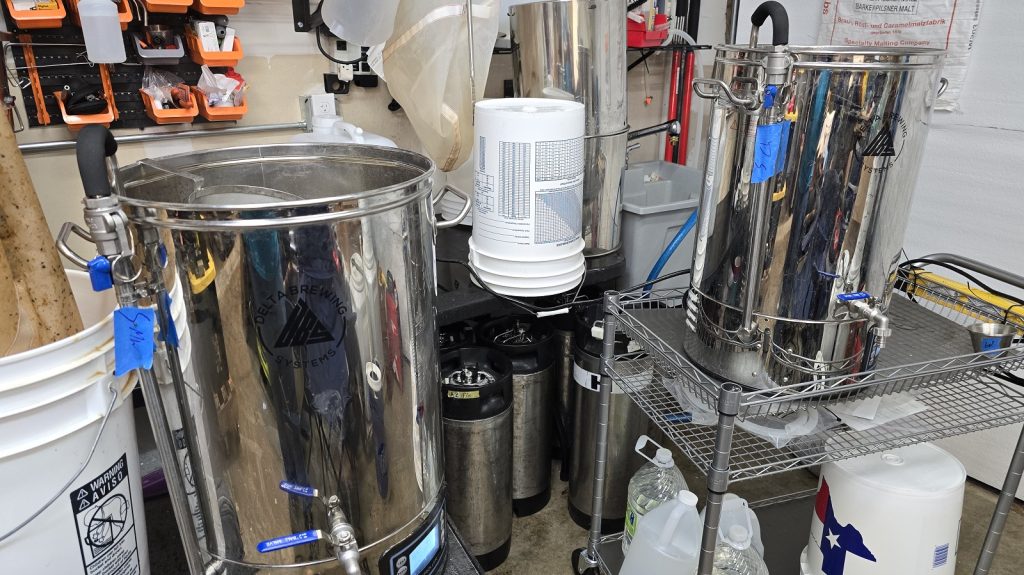
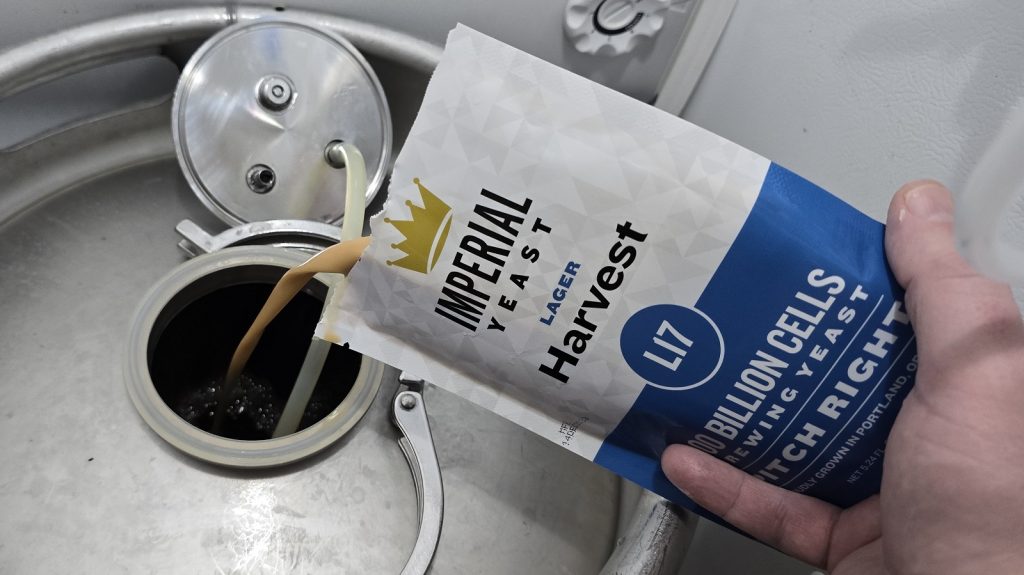











1 thought on “exBEERiment | Grain Comparison: Midnight Wheat vs. Chocolate Wheat Malt In A Schwarzbier”
Interesting !
I really enjoy a good Schwarzbier and it is always nice to brew.
First time I brewed it on a professional scale, I used normal roasted barley and Chocolate malt, but added these grains only at the end of the mash during recirculation. (and a tiny tiny bit of peated malt because I wanted this little twist)
Result was super satisfying in both color and taste aspect.
I’d definitely try these grains next time for another batch